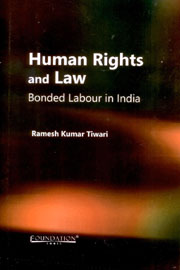Book contents
- Frontmatter
- Contents
- List of Tables
- Foreword
- Preface
- 1 Introduction
- 2 Slavery and Debt Bondage in British India: Policy and Implementation
- 3 Debt Bondage during the Post-Independence Period: Policy Developments
- 4 Problems in the Implementation of Bonded Labour System (Abolition) Act, 1976
- 5 Rehabilitation of Released Bonded Labourers
- 6 Judicial Intervention
- Conclusion
- Appendices
- Glossary
- Biographical Notes
- Bibliographical Essay
- Index
2 - Slavery and Debt Bondage in British India: Policy and Implementation
Published online by Cambridge University Press: 26 October 2011
- Frontmatter
- Contents
- List of Tables
- Foreword
- Preface
- 1 Introduction
- 2 Slavery and Debt Bondage in British India: Policy and Implementation
- 3 Debt Bondage during the Post-Independence Period: Policy Developments
- 4 Problems in the Implementation of Bonded Labour System (Abolition) Act, 1976
- 5 Rehabilitation of Released Bonded Labourers
- 6 Judicial Intervention
- Conclusion
- Appendices
- Glossary
- Biographical Notes
- Bibliographical Essay
- Index
Summary
An attempt has been made in this chapter to provide insights into the factors which culminated in the framing of the anti-slavery legislation, the complexities involved in the enactment of the legislation, the institutional framework of law-making and the problems in law-enforcement. Over the last 50 years, a large body of literature in the social sciences has emerged, mostly relating to the colonial period, which has provided deeper insights into the complexities of the enactment of legislation as well as its enforcement in the area of social legislation.
Origins of the Social Policy
The earliest social policy of the East India Company was the preservation of the status-quo and non-intervention in the social and religious life of the people of India. This policy was statutorily accepted by the Pitt's India Act, 1784. However, the 13th Resolution forming the proposal of 1813 submitted by the Government to the Parliament declared, that ‘it is the duty of this country to promote the interest and happiness of the native inhabitants of the British dominions in India, and that such measures ought to be adopted as may lead to the introduction amongst them of useful knowledge, and of religious and moral improvement’. As a matter of fact, the Charter Act of 1813 for the first time provided an opportunity for the expression of liberal principles in relation to India. However, it was not so easy to decide the kind of welfare which was to be promoted.
- Type
- Chapter
- Information
- Human Rights and LawBonded Labour in India, pp. 16 - 37Publisher: Foundation BooksPrint publication year: 2011



